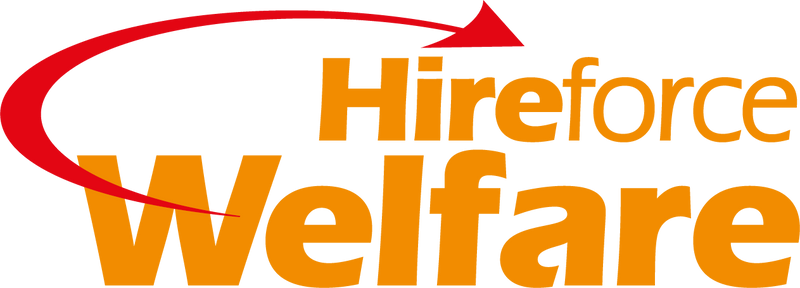From Planning to Execution: Integrating Welfare Units into Your Site Setup

When it comes to any site setup, welfare units are essential components, providing basic amenities such as sanitation, heating, drying rooms and office spaces.
These modular structures are the backbone of the construction industry or large-scale events, leading to the effective completion and success of projects.
Integrating these modular structures into your planning and implementation phases for any site construction project is essential. This ensures compliance with health and safety regulations, enhancing employee well being and maintaining productivity.
Hireforce Welfare offers high-quality welfare units that make your site setup effortless and effective. In this blog, we will explore the strategic approach to incorporating welfare units into site setups, from understanding regulatory requirements to relying on construction safety equipment, we will cover all bases.
Let’s begin!
1. Legal and Safety Obligations
Understanding the regulatory criteria is the first step towards incorporating welfare units into your site setup. Employees must be provided with basic facilities as required by various legal obligations.
For example, laws mandate that companies in the site construction industry must give access to restrooms, drinking water, rest places, office space and room for eating and changing. Ignoring these rules can have detrimental effects on employee productivity and well-being in addition to legal ramifications.
To avoid legal issues, you must be knowledgeable about the local and national laws relevant to your particular sector and area. This fundamental understanding aids in designing the type and quantity of welfare units required for the site and helping with compliance.
2. Assessing Site-specific Needs
The base for any successful construction project is having a site setup checklist of construction in place. Based on your site-specific needs, you can excel at your construction project.
Irrespective of the size, every site has different needs depending on the type of work being done, how many people are working on it, how long the project will take, and how the site is laid up. It is essential to carry out a complete needs assessment.
Here are a few important things to think about:
- Employee count: This establishes the required number and size of welfare units.
- Layout and accessibility of the site setup: Welfare units should be positioned to facilitate easy access without interfering with operations.
- Project duration: Compared to shorter-term events, longer projects may require more lasting solutions.
Site managers, project managers and your employees should be consulted at this phase to ensure that the facilities align with the site requirements and their demands.
3. Selecting the Right Welfare Units
Welfare units come in a variety of formats typically ranging from static welfare units to completely functional mobile structures with kitchens, bathrooms, and comfortable space. The decision is based on employee needs and the results of the site evaluation.
Here are a few vital elements to think about:
- Durability and weather resistance: Welfare units need to be strong enough to endure the weather and the circumstances of the location.
- Environmental friendliness: Solutions that are solar powered have a reduced impact on the environment.
- Features related to hygiene and maintenance: Particularly relevant in medical emergencies, devices featuring easily cleaned surfaces and hands-free capabilities might be helpful.
It's crucial to choose a provider who can deliver both dependable service and high-quality equipment. Seek suppliers who have strong support networks and satisfied customers from comparable implementations.
If you are looking for high-quality towable welfare units, contact Hireforce Welfare. From a 6-person Ecosmart Welfare unit to a 16-person Ecosmart welfare unit with office space, our variety is endless.
4. Logistics and Installation
Timely and safe welfare unit installation depends on effective logistics. This includes:
- Delivery schedule: Arranging supplies to cause as little disturbance as possible at the location.
- Site Setup Preparation: Making sure the ground is level and sturdy enough to hold the units is a critical foundation for the units
- Connection to utilities: These might include energy, and water connections, depending on the kind of unit.
Risk assessments and method statements must be in place to oversee the installation process, with safety as the priority.
5. Ongoing Management and Maintenance
Welfare units need consistent management when they are installed to stay clean, operational and well-maintained. This entails routine cleaning, technical inspections, and replenishing consumables like soap and paper towels.
It's also critical to have a feedback system in place so that employees may voice concerns or recommend enhancements. Frequent audits and inspections can support the upkeep of standards and guarantee that the facilities continue to satisfy employee needs and legal requirements.
Contact Hireforce Welfare For Towable Welfare Units!
Integrating welfare units into your site setup is not just about compliance with health and safety regulations; it’s about providing a work environment that respects and cares for your workforce.
Are you looking to buy towable welfare units for your next site construction project? We can help you!
At Hireforce Welfare, we offer high-quality 6-16-person welfare units that cater to all projects. Founded in 2012, we have rapidly grown to be a leading tool and equipment hire company in the UK, with new operations spanning across neighbouring counties of the UK. Our years of experience stand as a testament to the leading service standards and modern equipment that we swear by.
Contact us on 0345 3503793 or get in touch with one of our executives to get started.